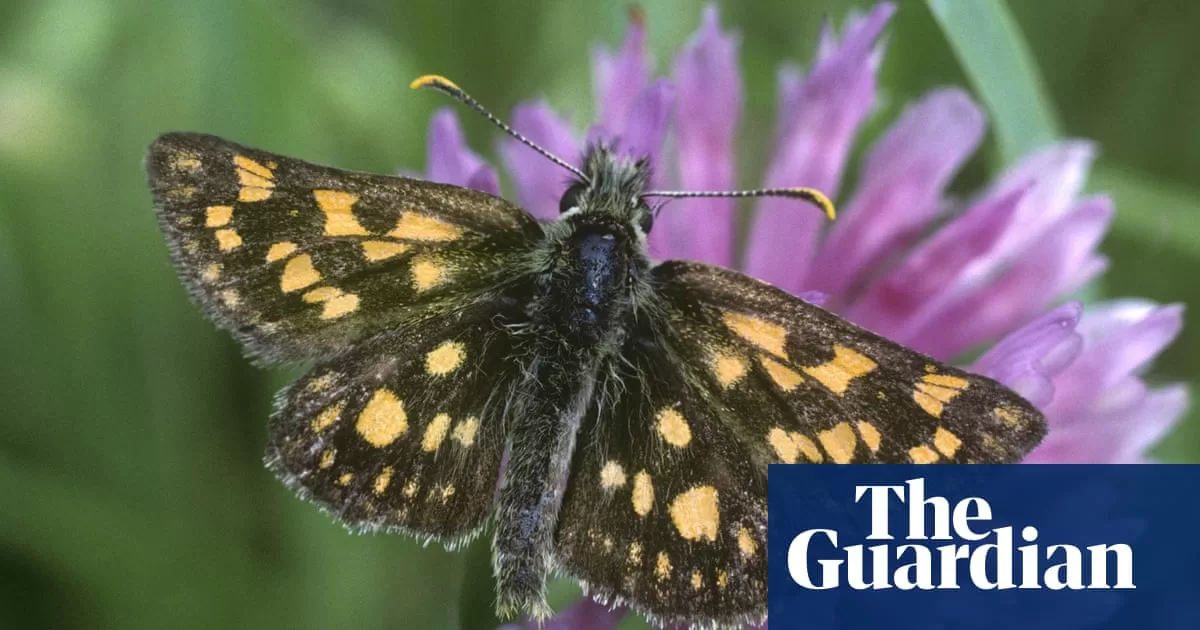
Midsummer butterflies are on the wing in early May after a sunny spring sparked one of the most advanced seasons for Britain’s Lepidoptera on record.
The Lulworth skipper – usually found in June and July – is flying at Lulworth Cove in Dorset, the chequered skipper emerged in April rather than mid-May in Scotland and the first swallowtail, which is commonest in mid-June, was spotted in Norfolk on 1 May.
“The chequered skipper is a butterfly you can set your calendar by – it typically comes out 13-15 May,” said Tom Prescott, the head of Butterfly Conservation Scotland. “I was absolutely staggered when it was seen on 26 April.”
Lepidopterists said the early emergences this year were caused by the prolonged sunny, dry spring but were also a clear sign of insects responding to global heating.
While some species appear to be adapting their emergence to climatic changes, there are fears some early emerging insects may fall out of sync with pathogens, predators or the availability of food for their caterpillars.
“It’s fine for the chequered skipper but I worry for some butterfly and moth species that are overwintering as an egg and trying to emerge as a caterpillar in sync with the leaf flush,” said Prescott. The caterpillar of the rare dark bordered beauty moth feeds on sucking aspen but if the fine spring causes it to emerge too early there won’t be any leaves for it to eat.
Many butterflies are emerging at least two or even three weeks earlier than normal this spring. The average first sighting of the swallowtail over the past 10 years has been 14 May but this year it was spotted at Norfolk Wildlife Trust’s Hickling Broad nature reserve on 1 May.
Both the swallowtail and the Lulworth skipper sightings on 2 May were the second-earliest recorded emergence over the past two decades, with only 2011 being a similarly early spring. In the 1980s, the Lulworth skipper emerged in early July.
The marsh fritillary was first seen on 20 April this year – in Wiltshire – three weeks before its first sighting in 2024. The wood white also popped up three weeks earlier than last year, first spotted flying through Devon and Dorset woodlands on 9 April.
Although the early butterflies are a sign of the pace of climate breakdown, Richard Fox, the head of science at Butterfly Conservation, said picking the optimum time to emerge was one challenge that most Lepidoptera could probably meet.
“Whilst there is potential concern about decoupling – coming out of sync with host plants or pathogens or predators – all of the things in these biological food webs are responding to the weather and climate change in the longer term, and doing so at different rates, with different flexibility,” said Fox.
“There’s a lot of inter-individual variation in butterfly and moth populations, so not all swallowtails are going to come out on 1 May. If the weather has tricked some into coming out too early it should not be a disaster. There should also be plenty of scope for evolutionary adaptation.”
after newsletter promotion
Alongside early sightings, there are strong indications of butterflies rapidly moving north because of climate change.
The gatekeeper crossed the border into Scotland for the first time last summer while relatively recent arrivals in Scotland, including the white-letter hairstreak, comma and holly blue, continued their rapid march north. The holly blue has moved from Edinburgh to Aberdeen in recent seasons while the comma has colonised the Highlands.
Last year was the second worst for common butterflies since scientific monitoring began 50 years ago and butterfly experts are hoping that the sunny spring enables populations to recover some of their numbers.
“It’s been a wonderful spring for butterflies in Scotland,” said Prescott. “The butterflies are on the wing much longer and many species are moving north rapidly.”
